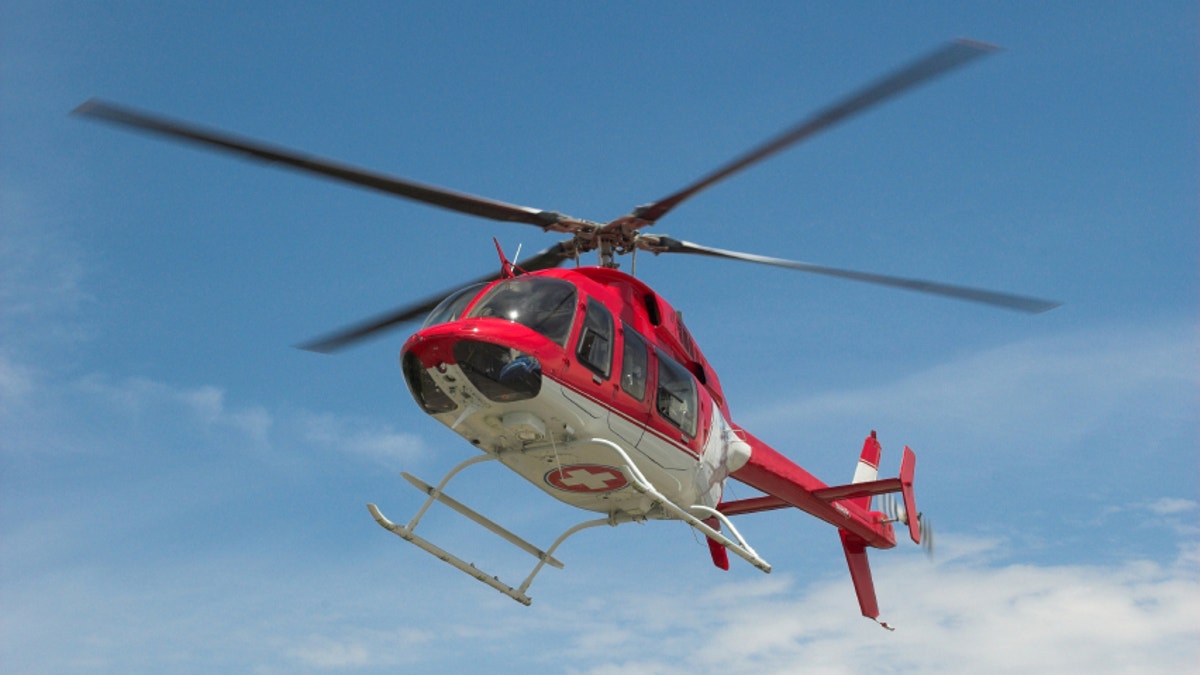
For someone who has been critically injured, there are two choices for getting to a hospital – via ground or helicopter. While many critics decry the use of helicopters for emergency transportation because of cost and potential crashes, it turns out a trip to the ER via the sky may actually improve a person’s chances for survival.
After a thorough analysis of the largest aggregation of trauma data from 2007 to 2009, researchers found that flying to the hospital is associated with a 16 percent increased rate of survival for patients taken to Level 1 trauma centers, which handle the most severe injuries.
“There’s been considerable controversy in this area over the last decade – highlighted by several prominent crashes,” said the study’s lead investigator Samuel Galvagno, assistant professor for the Department of Anesthesiology, Divisions of Trauma Anesthesiology and Critical Care Medicine for the University of Maryland School of Medicine. “There have been calls for limiting helicopter resources, but we weren’t really sure if there were any benefit or equivalent outcomes to ground transport.”
“But in the end, the helicopter comes out on top,” Galvagno said. “It was a highly statistically significant benefit.”
The research done by Galvagno and his team is the most extensive analysis of helicopter emergency medical services (HEMS) and ground emergency medical services (GEMS) to date. The study looked at over 220,000 adult patients who had sustained blunt or penetrating trauma – giving them an injury severity score over 15 (critically injured).
Even when controlling for other factors, there was strong evidence indicating significant survival benefits of HEMS over ground transportation, which the researchers are hoping to give a little more credit to the somewhat unpopular helicopter. According to Galvagno, there is a large number of HEMS critics who want to get rid of helicopters as forms of emergency transportation altogether.
“The problem is that helicopters are a tremendous investment for the public,” Galvagno said. “The helicopter alone can cost anywhere from $4 to $15 million. There’s a wide variability in costs.
“There have also been safety concerns – reports on flying in adverse weather conditions. When a helicopter crashes it evokes a very visceral response. As with any air crash, it’s a very emotionally-charged event that by no means I’m diminishing, but taking that into context forces us to look at the system.”
Instead of completely abolishing the helicopter, Galvagno said that their study’s findings show the need for more follow up research.
“What elements of the helicopter are responsible for these improved outcomes?” Galvagno asked. “We need to look at crew expertise, speed and distance. Is there something the helicopter can do that ground transports can’t do? There are a lot of questions that have been presented that need to be answered.”
According to the CDC, unintentional injury is one of the leading causes of death in young adults in the United States. The researchers also noted that more than 50 million people are injured each year, resulting in approximately 169,000 deaths nationwide.
With such a prominent need for timely responses to severe trauma, Galvagno hopes to eventually determine the best method of transportation – given the patient’s condition and circumstances.
“We need tools that paramedics can use to determine when helicopter versus ground transportation is best,” said Galvagno. “It’s difficult to make these decisions, and it’s important we know how to use this resource appropriately. The whole goal of the helicopter is to provide equivalent outcomes – the fact that we had better outcomes speaks to some element of the e helicopter that we need to capture in future studies.
“It’s not time to ground the helicopter fleets just yet,” Galvagno continued. “We also hope this paper provides a stronger methodology for how to look at a large data set on this topic.”
